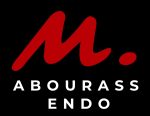Shop Now
A Comparaison of three methods of hand and automated instrumentation using the CFS and M4
One hundred and twenty-five (125) plastic blocks with simulated narrow and curved canals size ISO 15 with curvature of 50° – 70° were divided into 5 equal groups.
Group I was prepared by hand instrumentation with ISO 18 – 30 Flex-O-Files. Group II was prepared cervically with CFS Master File 15, 20 to the level of curvature about 5mm short of the apex, the working length was then estabilished and the canal was prepared by hand instrumentation with 15 – 30 Flex-O-Files. The final flare was then made with the CFS to size Master File 25 – 30.
Group Ii was similar to Group I] except for using the M4 handpiece for automation. Group IV was prepared to the full working length 0.5mm short of the foramen with CFS Group V was similar to Group IV except for using the M4 for automation. All 125 blocks were evaluated by a panel of 4 endodontists and rated for overall and specific quality.
Time scores were also analyzed for all groups. The results were analysed for significance and the conclusions were that automated instruments (CFS and M4) can be used to start cervical preparation of narrow curved canals, size ISO 15, less which should stop 3 – 5mm short of the apex or the apical curvature level should be used. The apical curvature area and the rest of canal is then prepared with hand files to size ISO 15 – 30 to working length, followed by final flaring and finishing the preparation with automation to size 30.
$0.00
| Language | Enslish |
|---|---|
| Pages | 12 |


Reviews
There are no reviews yet.